10 Simple Activities to Boost Creativity in Preschool Kids
Creativityin preschool is an essential part of every child’s journey. It helps kids express themselves, solve problems, and think in new ways. Through playful activities, children build important skills like imagination, curiosity, and emotional awareness. These moments of exploration are also opportunities for growth that last long after preschool.
Table of Contents
Nature-Inspired Art Projects
Creativity in preschool is about engaging kids in art that’s inspired by nature is a fantastic way to encourage creativity while connecting with the outdoors. Kids are naturally curious about the world, so why not turn that curiosity into fun, imaginative activities? Here are a couple of simple yet impactful nature-based art projects.
Leaf Printing

Leaf printing is as simple as it is magical. Start by gathering leaves of all shapes and sizes during a nature walk. The more variety, the better! With just some paint and paper, kids create stunning patterns by painting one side of a leaf, pressing it onto paper, and lifting it back up to reveal a unique print.
This activity isn’t just fun—it’s sensory-rich. Children explore texture, noticing how smooth—or bumpy—a leaf feels as they paint, press, and peel. They’ll also experiment with colors, mixing shades to mimic the foliage around them.
Rock Painting
If you’ve got a pile of rocks and some paint at home, you’re all set for this creative adventure. Rock painting allows kids to turn everyday stones into colorful works of art. They can paint pictures, make patterns, or even turn rocks into storytelling tools, like animals or faces.
This activity helps preschoolers with fine motor skills as they grip small brushes and carefully apply paint. It’s also a wonderful way for kids to express themselves and develop their creative voices.
Nature can be one of the most inspiring classrooms for creativity in preschool. Simple projects like these turn everyday materials into extraordinary art, fostering hands-on learning and joy.
Imaginative Play Activities
Imaginative play gives kids the freedom to explore their creativity, embrace curiosity, and make sense of the world. It fosters problem-solving, storytelling, and emotional growth, all while being a ton of fun. Dress-up and puppet shows can turn everyday moments into exciting adventures.

Dress-Up and Role Play
A box full of costumes and props is the perfect spark for a child’s imagination! When kids put on a firefighter’s hat or a princess gown, they don’t just play dress-up—they step into a whole new world. They might “fight” fires, host royal tea parties, or take care of “patients” as a caring doctor.
This kind of play encourages storytelling, which builds language skills and helps kids process the world around them. Plus, role-playing fosters empathy as kids imagine how others might feel or think. Not sure where to start? A small collection of costumes or even scarves and hats from your closet is all you need!
Puppet Shows
Puppet shows give kids the chance to create characters, invent dialogue, and put on performances. Using store-bought puppets or ones made from socks and paper bags, children can bring their imaginations to life.
Beyond creativity, puppet shows strengthen fine motor skills and build confidence as kids practice performing for others. They also encourage teamwork if siblings or friends join in. If you’re looking for a place to start, consider having your child retell a favorite book or invent their own hilarious tale.
With just simple props or puppets, your preschooler can transform a living room into a stage and develop creativity in ways no screen can replicate. Imaginative play is an open door to endless possibilities!
Hands-On Science Experiments
Science experiments are a powerful way to spark curiosity and creativity in preschoolers. They teach kids about the world around them, foster problem-solving, and are just plain fun. Here are two simple activities that your preschooler will absolutely love!

Sinking and Floating Experiment
The sinking and floating experiment is a favorite for little ones. It’s easy to set up and keeps kids intrigued as they guess which objects will sink or float.
What You’ll Need:
- A clear container filled with water (a large bowl or tub works great).
- Various small objects from around the house (e.g., a spoon, sponge, toy block, small plastic ball, rock, grapes, apples, plums, etc.).
Steps:
- Gather your materials and fill your container with water.
- Show the objects to your child one by one and ask, “What do you think will happen—will it sink or float?”
- Let your preschooler gently place each item into the water.
- Observe what happens and talk about why some items float while others sink.
This activity introduces basic scientific concepts such as density and buoyancy in a simple, visual way. You can even turn it into a mini game by keeping score of correct guesses.
Making Volcanoes
A baking soda and vinegar volcano is one of the most exciting experiments for this age group. It’s like magic to see the eruption unfold!
What You’ll Need:
- Baking soda
- White vinegar
- Dish soap
- Food coloring (optional)
- A small container or cup
- Modeling clay or a plastic bottle to form the “volcano”
Steps:
- Use a small container or bottle as the base for your volcano. Surround it with modeling clay or a cone-shaped surface to resemble a mountain.
- Add 2–3 tablespoons of baking soda to the container.
- Mix 1/2 cup vinegar, a squirt of dish soap, and a few drops of food coloring if you want your volcano to look more dramatic.
- Pour the vinegar mixture into the “volcano” and watch it erupt as the baking soda reacts with the vinegar.
This is a great way to introduce preschoolers to chemical reactions. The fizzing and bubbling make science feel like a giant adventure.
Both of these experiments provide hands-on fun while engaging kids’ natural curiosity. Watch your preschooler light up as they explore science in action!
Sensory Activities
Sensory play is a vital part of fostering creativity in preschoolers. It builds nerve connections in the brain, hones fine motor skills, and encourages exploration. These activities stimulate a child’s senses, including touch, sight, and hearing, which supports their natural curiosity and problem-solving abilities. Here’s a easy guide to homemade sensory dough.

Play Dough Creations: Encourage sculpting with play dough to enhance fine motor skills.
Play dough is a simple, versatile tool that encourages both creativity and skill development. Kids can sculpt shapes, roll dough into snakes, or flatten it out to use cookie cutters. Beyond the fun, this activity strengthens fine motor skills—essential for tasks like holding a pencil or using scissors.
Here’s a quick tip: provide different textures like beads, googly eyes, or pipe cleaners to mix with the play dough. Your preschooler can create textured creatures or intricate designs! This hands-on activity is as engaging as it is educational. Plus, it’s an easy way to keep kids entertained on a rainy day. Get you recipe for homemade playdough here.
Sensory Bins
Sensory bins are incredible for sparking creativity while providing endless fun. They’re simple to set up and allow children to dig, sift, and explore at their own pace.
How to Create a Sensory Bin:
- Choose a container. A sturdy plastic bin works best.
- Pick a filler. Common choices are rice, beans, sand, or water.
- Add tools and toys. Measuring cups, spoons, or toy animals make great additions.
- Include a theme. For example, you could try a “beach adventure” bin with blue-dyed rice, seashells, and mini shovels.
Through sensory bins, kids learn cause and effect, build hand-eye coordination, and develop focus.
Looking for inspiration and insight into sensory bins? Explore Sensory Bins: A Simple Guide to Hands-On Learning and Child Development for creative ideas and developmental benefits!”
Sensory activities captivate young minds and lay the foundation for lifelong learning. From sculpting with play dough to exploring a sensory bin, kids build skills that nurture creativity in preschool and beyond!
Creative Movement and Dance
Movement is one of the best ways for preschoolers to express their creativity. It lets them explore rhythms, emotions, and self-expression without needing words. Through activities like dance or yoga, kids not only boost their creativity but also their coordination and confidence.

Dance Parties
Dance parties are an easy way to make movement fun for kids. Pick a theme like “jungle animals” or “outer space” to inspire their imagination. Encourage your preschooler to “move like they’re walking on the moon” or “stomp like a big elephant!” These prompts help them explore movement in playful ways.
You don’t need formal choreography—just some music and a bit of enthusiasm! Themed dance parties help kids express themselves freely while developing rhythm and physical coordination.
Yoga for Kids
Yoga is a calming, creative activity perfect for young kids. Simple poses like the “tree” or “cat-cow” stretch encourage imagination as kids turn their bodies into different shapes. Encourage mindfulness during the poses by asking questions like, “How do you feel when you’re swaying like a tree?”
Beyond creativity, yoga helps with focus, balance, and relaxation. It’s also a great way to promote emotional regulation—something preschoolers are still learning. Want to try yoga at home? Explore Yoga for Kids: Benefits and Poses, which has tips on how to get started.
With a mix of energetic dance and calming yoga, creative movement activities unlock a unique way for preschoolers to express themselves while learning through their bodies. These moments of movement and connection can light up a child’s imagination unlike anything else!
Art and Craft Activities
Art and craft activities are a fantastic way to let preschoolers explore their creativity while strengthening essential developmental skills. These hands-on experiences allow kids to express themselves, think independently, and learn in enjoyable ways. Let’s dive into two engaging activities that your little ones will love.

Collage Making
Collage-making is perfect for preschoolers. It’s all about using everyday materials to create something unique. Start by gathering items like magazines, colored paper, leaves, or fabric scraps. Add tools like child-safe scissors, glue sticks, and a sturdy base, such as cardboard or thick paper.
Encourage your child to experiment with shapes, textures, and colors. Ask questions like, “What happens if we layer this piece on top of that one?” This open-ended activity lets kids follow their imagination. They’ll explore designs, learn how materials can fit together, and even develop fine motor skills.
Watercolor Painting
Watercolor painting is more than just fun—it’s a powerful tool for creativity. The fluid nature of watercolors allows kids to explore blending, layering, and experimenting with brush strokes. This helps develop their imagination and problem-solving skills as they create anything from abstract shapes to simple landscapes.
One of the calming effects of watercolor painting is its soothing rhythm. It’s almost meditative, making it a great activity for kids to express their feelings. Plus, it strengthens hand-eye coordination and teaches them how to control tools like brushes.
Introduce colors and techniques gradually. For instance, show how to create light and dark shades by adding or removing water.
Both collage making and watercolor painting highlight how art activities can unlock creativity in preschoolers. They’re simple, affordable, and deliver plenty of developmental benefits. Let kids explore their artistic side and see how their imaginations flourish!
Musical Activities
Music is an amazing way to develop creativity in preschoolers. It’s engaging, fun, and encourages kids to express themselves in unique ways. From learning rhythm patterns to inventing their own tunes, music opens up a whole new world of exploration. Let’s dive into some activities to get your little ones inspired!
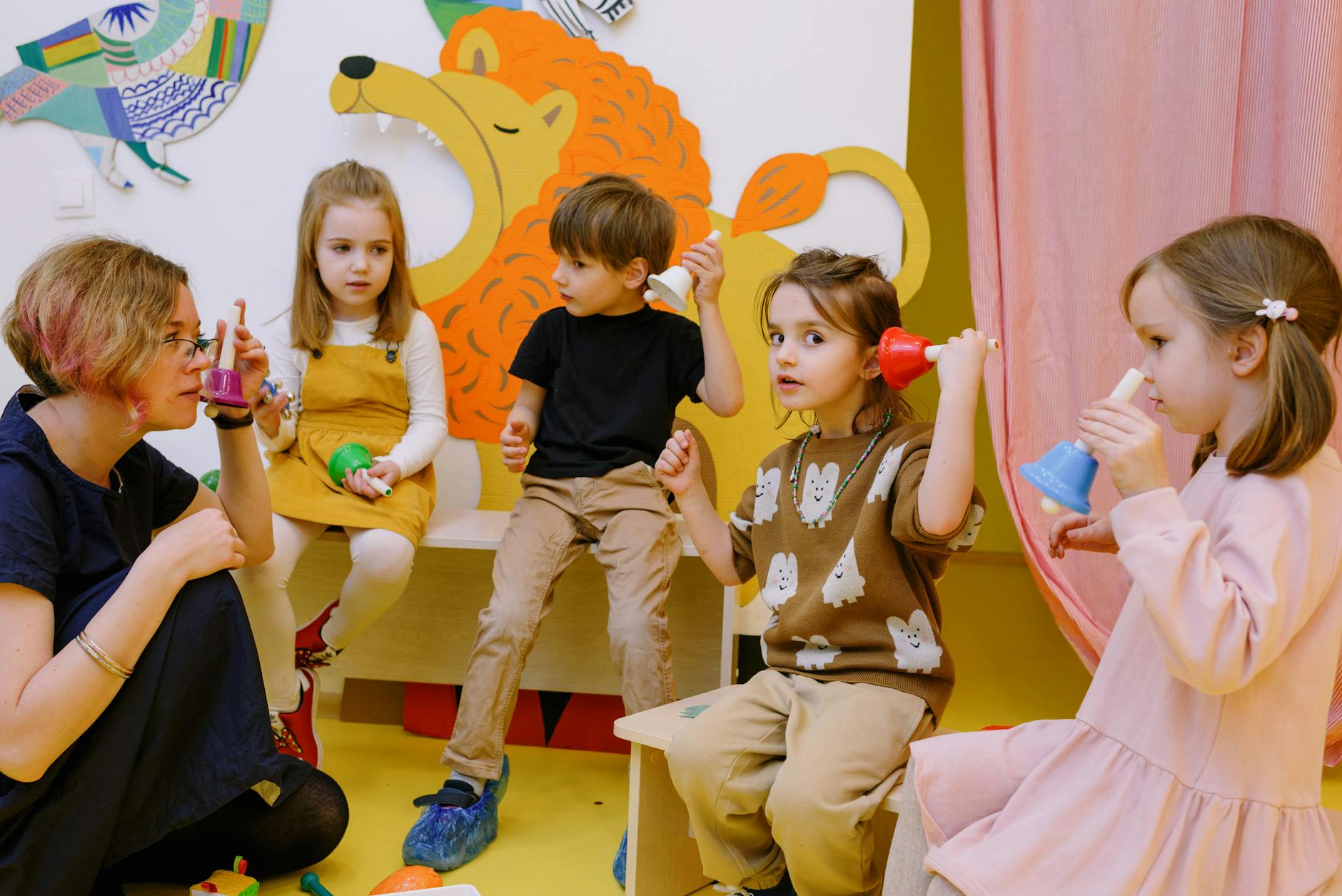
Rhythm and Percussion Games: Suggest simple instruments that can be used for rhythm practice.
Introduce preschoolers to rhythm using simple instruments. Think tambourines, hand drums, shakers, or even wooden spoons on a pot! These tools are easy for small hands to handle and allow them to explore beats and patterns naturally.
Here’s an idea: Play their favorite songs and encourage them to clap or tap their instruments along with the beat. You can even take turns creating rhythms for everyone to repeat. It’s like a musical game of Simon Says! Not only does this activity improve coordination, but it also strengthens listening and pattern recognition skills.
Song Creation: Encourage children to make up their own songs or jingles.
Encouraging kids to create their own songs transforms them into little storytellers. Provide them with topics to spark ideas—like animals they love or their favorite snacks. It doesn’t have to be perfect; even silly rhymes bring loads of joy and creativity.
For example, try starting with a rhythm they already know, like “Twinkle, Twinkle, Little Star,” then tweak the words to fit their theme. This activity builds language skills and imagination while giving kids the confidence to express their thoughts in a creative way.
Music is more than entertainment—it’s a playful way to strengthen motor skills, enhance cognitive development, and spark endless creativity!
What we know!
Encouraging creativity in preschool nurtures essential skills that shape a child’s future learning and problem-solving abilities. Through simple activities like art, music, movement, and play, children build confidence, improve motor skills, and explore their unique voices. These moments of discovery create a foundation for emotional growth, curiosity, and lifelong learning.


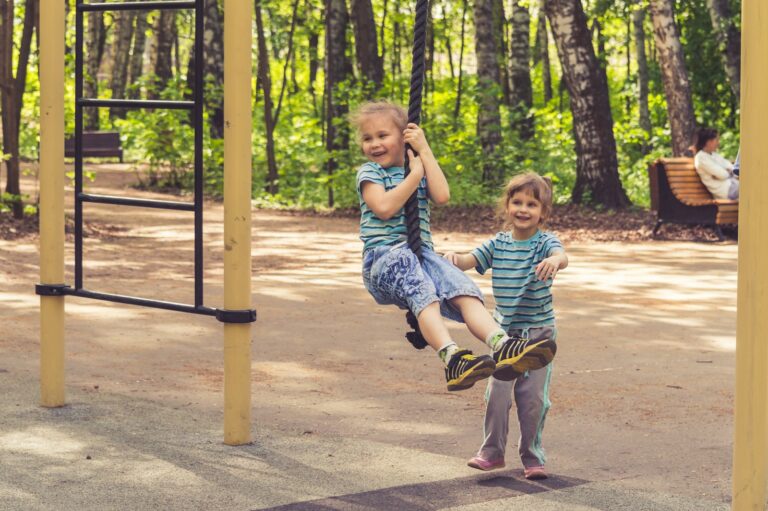
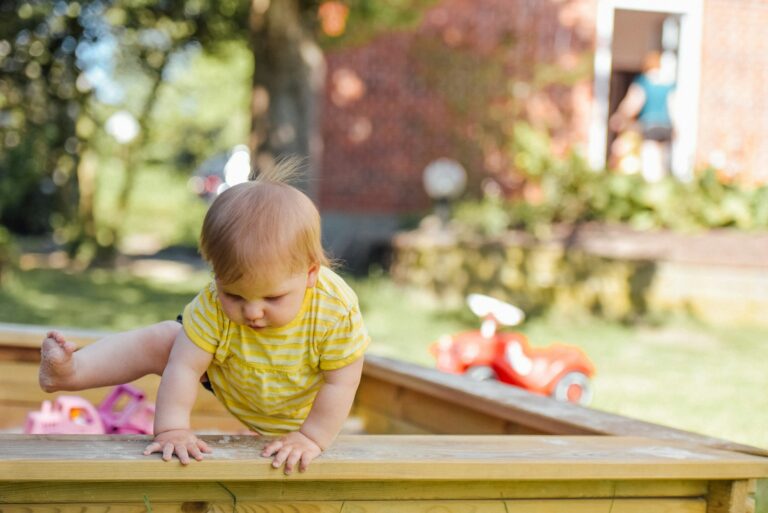
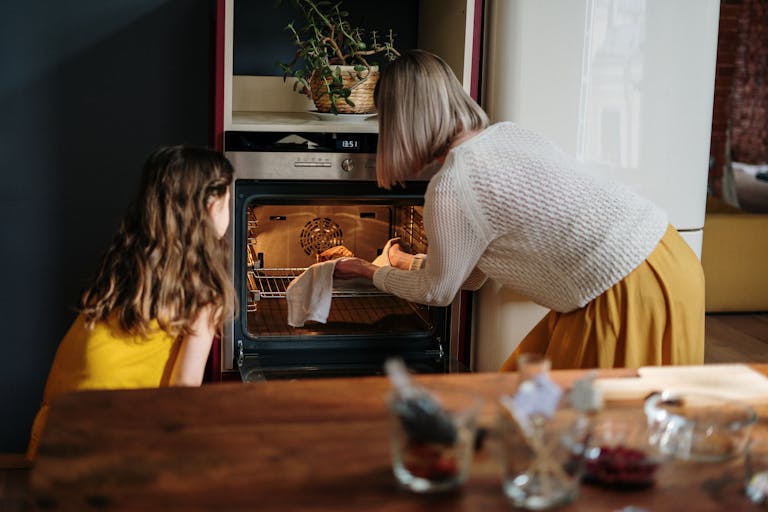
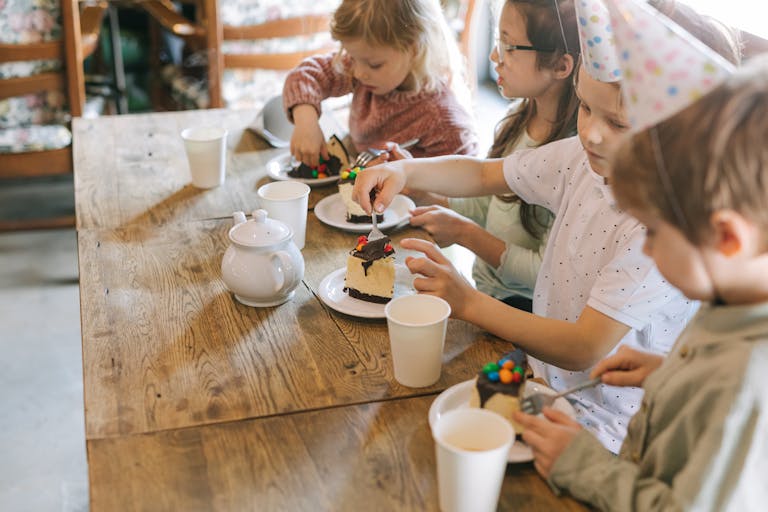
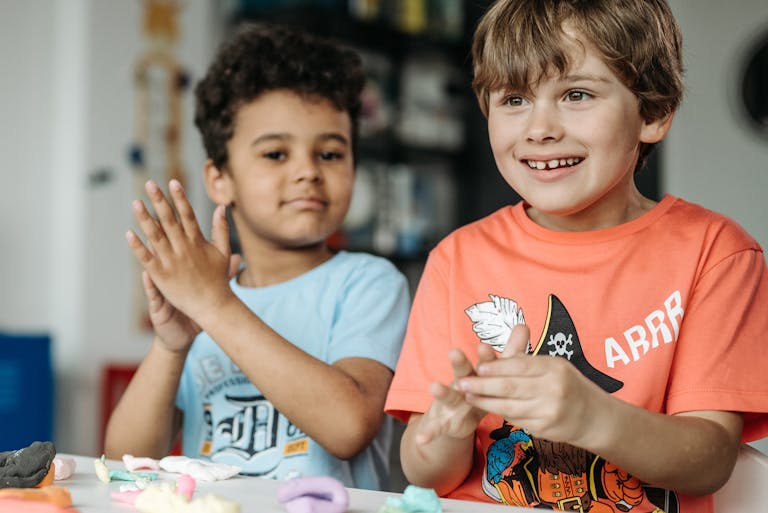
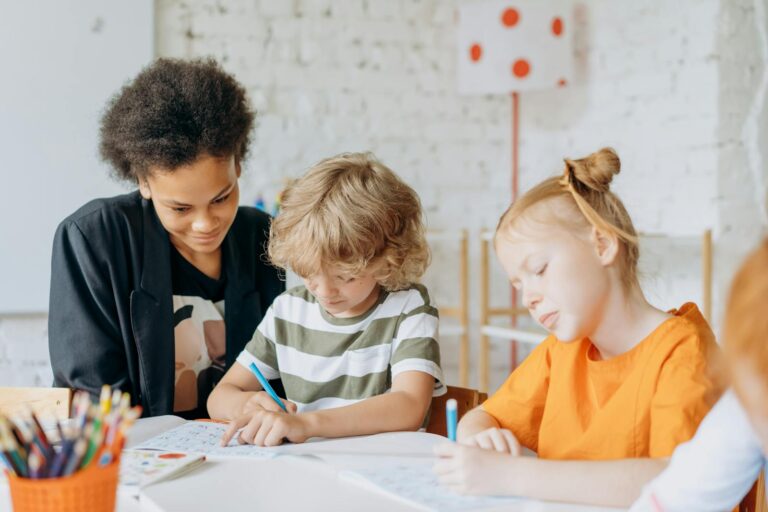
One Comment
Comments are closed.